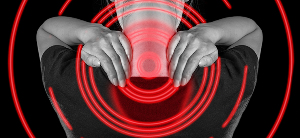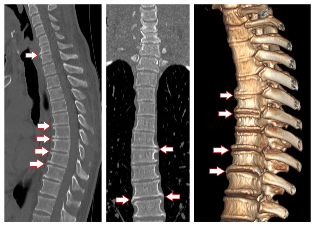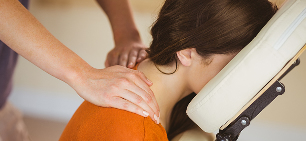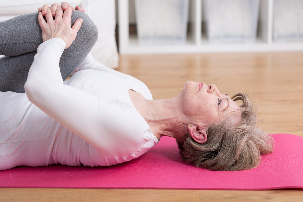Osteochondrosis – is degenerative-degenerative defeat of the tissues of the spine, which sees a change in the shape and wear of the intervertebral discs, bodies, and the surfaces of the joints. Usually the degenerative processes primarily affecting bone and ligaments. This disease is considered one of the most common causes of back pain.
Most cases of diagnosis, degenerative disc disease falls on the lumbar department. These statistics are natural, because of this separation of the spine bears the load of the entire upper part of your body. When osteochondrosis occurs to displacement of the vertebrae and, as a consequence, may develop intervertebral hernia helena squeezing the blood vessels and nerve endings. Osteochondrosis – it is a very painful disease that brings the patient a lot of discomfort and poorly treatable.

Types of degenerative disc disease and the stage of its development
There are four types of degenerative disc disease. The disease is divided into groups according to the place of localization:
- osteochondrosis of the lumbar spine;
- osteochondrosis of the cervical spine;
- osteochondrosis of the thoracic spine;
- the most common degenerative disc disease – the defeat of two and more departments of the spine.
Explanation of the localization of the degenerative disc disease is very simple – the disease develops in those departments that are prone to the highest pressure and have a high mobility.
The disease develops in stages, moving from local symptoms to joint manifestations. The stage of development of degenerative disc disease are as follows:
- Instability of the vertebrae, caused by violation of the location of the intervertebral disc. At this stage, the patient feels discomfort during the movements, which affect the affected diseases of the spine. At this stage, degenerative disc disease of the spine is very prone to injury.
- The destruction of the fibrous rings of the disc, the intervertebral slit decreases in size.
- Phase is characterized by the fall of the fibrous rings and the protrusion of one or more cores of discs. Appear intervertebral hernia, and deformed the line of the spine.
- Because of the bony growths of the patient's movement is limited, painful clearly expressed. Costeniuc ligaments of the spine.
At each of these stages the successful treatment of degenerative disc disease is still feasible, but the more authors, the harder it becomes to get rid of its consequences, and on the last stage, how to get rid of the disease completely is virtually impossible.
The reasons for the development of degenerative disc disease
A complete list of the causes of degenerative disc disease is very large. This includes both the individual factors and their combination, becomes the cause of the displacement of the intervertebral discs. But most often osteochondrosis develops due to the following reasons:
- heredity – if one of the parents was osteochondrosis, then the person gets the risk, because the structure of the intervertebral cartilage often is inherited;
- hard work, loads, which exceed the permitted facility available rules for workers;
- a longer stay in one position may also be an important factor. Often osteochondrosis is diagnosed in people of sedentary occupations;
- various diseases of the back, which lead to a curvature of the spine;
- beriberi and hypovitaminosis;
- a back injury;
- infectious disease;
- congenital defects of the spine, which lead to rapid abrasion of the intervertebral disc;
- the natural aging of the organism;
- obesity;
- constant stress;
- hypothermia.

Symptoms of degenerative disc disease
Depending on the place of localization of the disease, its symptoms may significantly vary. This is due to the fact that the protrusion of the disks and pinching the container acts on the next tissues and organs, causing a variety of symptoms, peculiar only to this belt the spine. It is therefore considered symptoms of various types of degenerative disc disease should be separately.
Symptoms of degenerative disc disease of the lumbar-sacral spine
Sciatica (helena only lumbar) osteochondrosis is the most common type of this disease. The shoulders serve the silencer in most of the movements and twists and turns carried out by the person. The symptoms localization of the disease in this department look so:
- pain in the lower part of the back, increasing when performing exercises, sharp turns helena search for a long time in one position. Pain, as a rule, pain, sharp pains in the early stage arise very rarely and can serve a symptom of intervertebral hernia;
- pain in the legs, caused by pinching the roots of the spinal cord. Such pain may be various – shooting, pain, spreading to only one side of the thighs;
- limited mobility, the patient is experiencing pain during cornering, the slopes and sitting. If the patient takes a comfortable for him the possession of your body, pain goes.
If You have found in each other similar symptoms, seek immediate medical help. Easier to prevent disease than to fight with the consequences.
Diagnosis
For the diagnosis of degenerative disc disease of the spins of the doctor-the neurologist prescribes as a warehouse of the spine, such as:
- radiography;
- computed tomography;
- magnetic-resonance tomography.
How to treat degenerative disc disease
In most cases treatment of degenerative disc disease is done by conservative methods. A doctor who specializes in the treatment of degenerative disc disease and other diseases of the spine, called backbone. They always prescribes several types of treatments that include medicine tools, movement therapy and other methods. Among the most common ways to treat degenerative disc disease:
- physiotherapy;
- different types of massage;
- medications;
- traction;
- reflexology;
- manual therapy;
- Movement therapy.
Let us consider each of these methods is closer.
Physiotherapy
Almost always is used in the treatment of lumbar degenerative disc disease. In physiotherapy use laser, ultrasound, and magnetic vibration, which help to relieve the pain. Also it helps to neutralize the inflammation. This method allows to reduce the doses of drugs, which are necessary for the suppression of pain. Side effects missing.

Therapeutic massage
Therapeutic massage gives the same positive results, as well as physiotherapy. But it cannot be used at the time when the disease is in the acute phase. Course of massage in the period of remission positive impact on the state of the nervous system, relieves pain and excessive muscle tension, stimulates blood circulation and strengthens the walls of blood vessels. In addition, therapeutic massage can improve the body's resistance to disease and normalizes the process of metabolism.
But for therapeutic massage there are some contraindications which may make its use impossible. These include skin diseases, open wounds, any inflammatory processes in the body.
Drugs
Treatment treatment of degenerative disc disease of the cervical, thoracic and lumbar department carried out practically always. Typically, the drugs are applied in the period of exacerbation of the disease, and their action is aimed at reducing painful symptoms. Tablets, ointments, gels and capsules are divided into types depending on the range and its species. There are means for the recovery of the cartilage, ointments for the stimulation of blood circulation, gel with warming effect and other ways to establish the function of the musculoskeletal system of the body.
Reflexology
Reflexology is usually used in combination with massage treatments. It is based on the right action of a on the pressure points and reflex zones. As a standalone method this therapy is not applicable, but serves as a good supplement to the other ways to treat degenerative disc disease of the cervical and other types of this disease. Reflexology relieves pain, restores the natural burden on the various points of the spine, but has a very short-term effect.
Physical therapy
Therapeutic physical training is considered to be the main way to treat degenerative disc disease, regardless of the zone of its location. This is a very effective method that using a limited load on the joints and muscles, strengthens the muscle corset back. Exercises with cervical osteochondrosis are carried out only under the supervision of an instructor helena in accordance with his recommendations. Engage exercise therapy is possible at any age and in any form, degenerative disc disease, the only exceptions are cases when the disease is in the acute phase, and significant back injury, which can worsen. Exercise therapy helps to get rid of back pain, back spine flexibility and improve the overall health status of the patient.
Physiotherapy in osteochondrosis includes a complex exercise that requires great physical effort and focused on slow building the muscle tone of the patient. Run can as itself a patient with the participation of a physician, and with the use of additional training equipment. To physical therapy include such kinds of methods:
- mechanotherapy – this exercises are performed the patient on the special types and simulators. Method is used when a serious degree of damage of the spine osteochondrosis, when the movement of the person prevents. This method also helps in the need for the development of individual muscle groups and helps to improve posture of your body;
- kinesitherapy – a complex of breathing and physical exercises, exposure, which is aimed directly at the guests the development of degenerative disc disease. The course is developed individually for each patient and helps to improve joint mobility, muscle tone, elasticity of the ligaments and tendons;
- path – hiking, in which is included a complex of simple exercises and physical exertion. Using this method can achieve improvement of work of cardiovascular system, improve endurance, and develop the respiratory function;
- water kinesitherapy – aerobics, exercise in which they are carried out in the pool. Usually takes place in the sea helena warm water. Exercise will strengthen the muscles, joints and ligaments, and also improve the health condition of the patient;
healthy swimming – a good way to prevention and treatment of various types of degenerative disc disease. It helps to figure out the correct posture of your body, and do the natural position of the shoulder of the spine. Swimming may even help in the correction of deformities of the vertebral column.
Treatment of degenerative disc disease using gymnastics
Osteochondrosis of every type needs treatment by the method of small tasks and exercises. This approach not only helps how to quickly get rid of the pain and discomfort, but also accelerates the overall process of treatment, restores possession of your body and increases flexibility of the spine. Every kind of degenerative disc disease treatment includes different types of exercises. Depending on the place of localization of disease complexes can be targeted to a specific group of muscles and vertebrae.
Exercises lumbar osteochondrosis
The most effective treatment for lumbar degenerative disc disease is considered to be swimming. Also recommended is the complex of special exercises on simulators and physiotherapy. Most of the exercises designed to strengthen the muscles of the back. One of the most common exercise – "bicycle". This is done lying down on your back. The patient carried out his feet movements, which simulate the rotation of the pedals of the bicycle. Another popular exercise – with a support on bent elbows need to bend over backwards several times in the infant department and fix the position for 4 seconds. Repeated exercise is not more than five times in a single complex. At this stage the load should be adjusted by your doctor. If the state of health allows, and then gradually may increase, and if the patient when performing the exercise they feel pain, then exercise is necessary to terminate the helena temporarily suspend.
Exercises with cervical osteochondrosis

Treatment of cervical degenerative disc disease requires the identification of the gymnastics of two kinds:
- exercises for the cervical spine, in which the amplitude of the motion is minimal. In this case the patient himself creates the resistance movements of the neck hands. The exercises are aimed at overcoming this resistance, and thus strengthens the group of the neck muscles;
- the second part of the methodology includes the dynamic exercise and the circular turns of the head, which the mobility of the joints of the neck. All the exercises associated with the strengthening of the neck, it must be done at a slow pace, without sudden movements and without significant cost.
As a supplement to the exercises can set apart the path and therapeutic swimming. Both methods of treatment are focused on the same thing, and physiotherapy – to increase the mobility of the neck.
Exercise in osteochondrosis of the breast department
Feature of the treatment of thoracic degenerative disc disease is that most exercise when it is carried out in a standing position. The most common variant, it is allowed the majority of patients with this diagnosis – mahi hands and the sails of the hull. Warm up before performing the exercises are performed in a sitting position on a chair. On the inhale, the patient places his hands on the back of the head and bend back into it, as molded to the upper part of the backrest of the chair. On exhalation, the patient lowers his hands along the trunk.
The next exercise treatment complex in breast osteochondrosis – it progibanija standing on all fours. Absolutely all types of exercises should be performed slowly and without sudden movements. Patients with osteochondrosis of the parent department is also useful swimming, mechanotherapy and water kinesitherapy.
Danger
Osteochondrosis without proper treatment sees to such complications, such as:
- vascular something else;
- radiculitis;
- intervertebral hernia;
- violation of oxygen nutrition to the brain.

















































